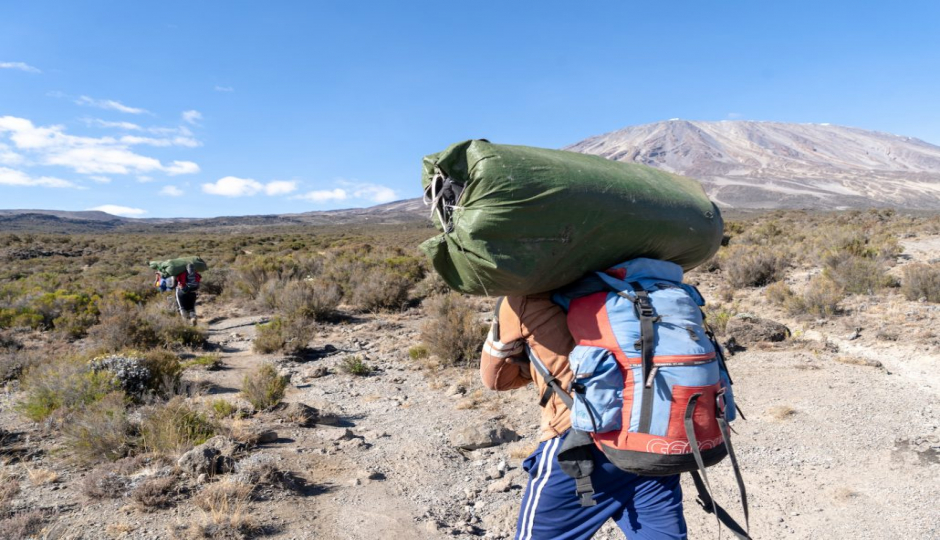
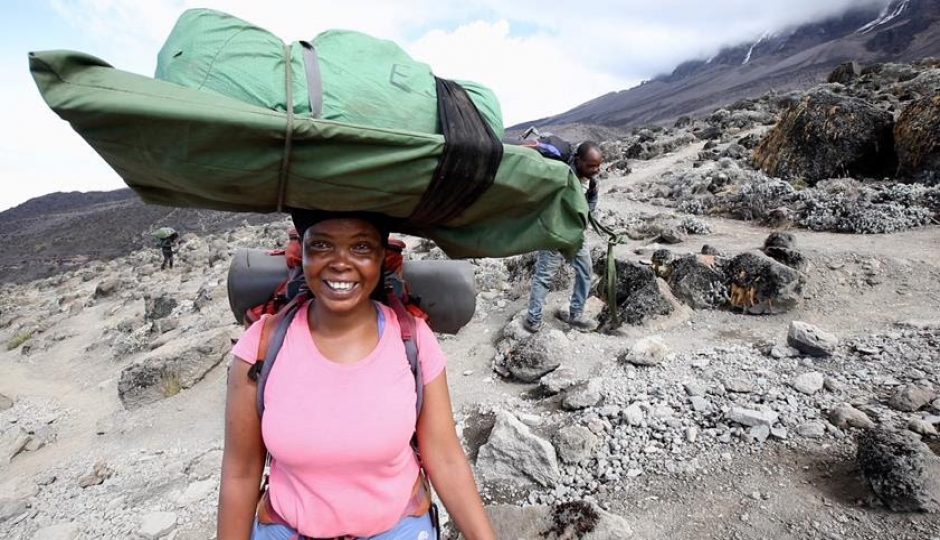
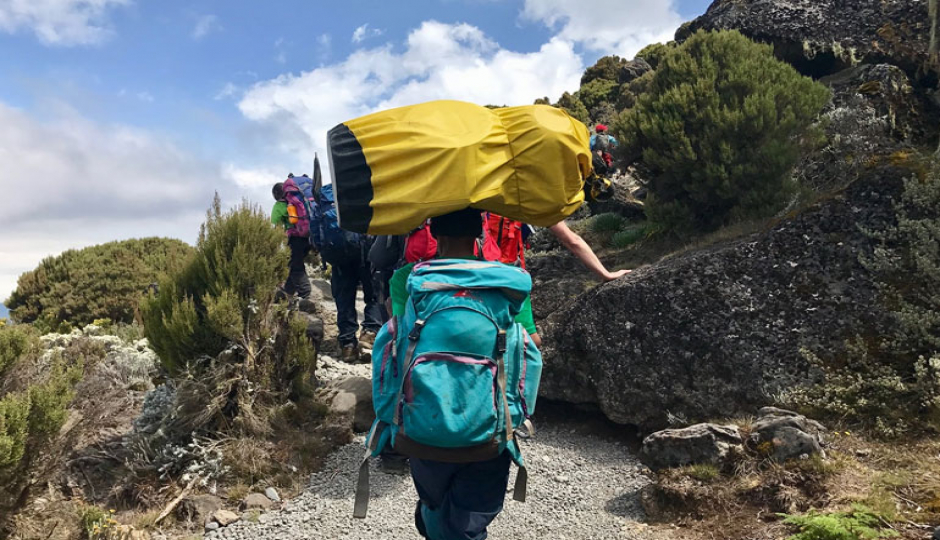





Climbing Mount Kilimanjaro, the tallest peak in Africa, is a dream adventure for many outdoor enthusiasts. To make this challenging ascent more manageable, trekkers often rely on a team of experienced guides and porters. However, determining the appropriate number of porters per client is a crucial consideration to ensure both the comfort of trekkers and the conservation of the mountain's fragile ecosystems. In this blog post, we will explore the factors that influence this balance and offer insights into responsible trekking practices on Kilimanjaro.
Understanding the Role of Porters
Porters are the unsung heroes of Kilimanjaro treks. They carry equipment, supplies, and clients' personal belongings, allowing trekkers to focus on the climb. Their role is physically demanding, and they play a vital role in the overall success and safety of the expedition.
Factors Influencing the Number of Porters
Regulations and Weight Limits: Kilimanjaro National Park Authority (KINAPA) sets strict regulations regarding the weight each porter can carry. These regulations are designed to protect the welfare of porters and ensure that they are not overburdened. As of my last knowledge update in September 2021, a porter is typically allowed to carry up to 20-25 kilograms (44-55 pounds).
Group Size: The number of porters required depends on the size of the trekking group. A larger group with more clients will naturally necessitate more porters to transport equipment and supplies.
Route and Duration: The choice of route and the duration of the trek also influence porter requirements. Longer routes and treks that require more equipment and supplies may require additional porters.
Camping Style: The choice between camping and staying in huts also impacts porter numbers. Camping typically requires more equipment, which means more porters are needed to carry and set up camp.
Client's Personal Belongings: Trekkers are allowed to bring personal belongings, and the weight of these items can vary significantly. Porters are responsible for carrying these belongings, so the number of porters may need to be adjusted accordingly.
Responsible Trekking Practices
Adhere to Regulations: It is essential to adhere to KINAPA's regulations regarding porter weight limits. Overloaded porters risk injury and health problems, and responsible tour operators should prioritize their well-being.
Choose Ethical Tour Operators: Research and choose tour operators who are known for their ethical treatment of porters, fair wages, and good working conditions. They should also provide proper gear and training for their staff.
Pack Light: Trekkers should pack only essential items and keep their personal belongings to a minimum. This not only reduces the number of porters required but also makes the trek more enjoyable for all.
Engage in Sustainable Tourism: Support sustainable tourism practices that prioritize environmental conservation and minimize the impact on Kilimanjaro's fragile ecosystems.
The number of porters per client on a Kilimanjaro trek is influenced by various factors, including regulations, group size, route choice, and camping style. Striking a balance between client comfort and porter welfare is crucial for responsible trekking practices. Trekkers should choose ethical tour operators, adhere to weight limits, pack light, and engage in sustainable tourism to ensure a safe and enjoyable climb while preserving the natural beauty of this iconic mountain. Kilimanjaro's summit awaits those who embark on this incredible journey, and it's our responsibility to make this adventure both memorable and responsible.




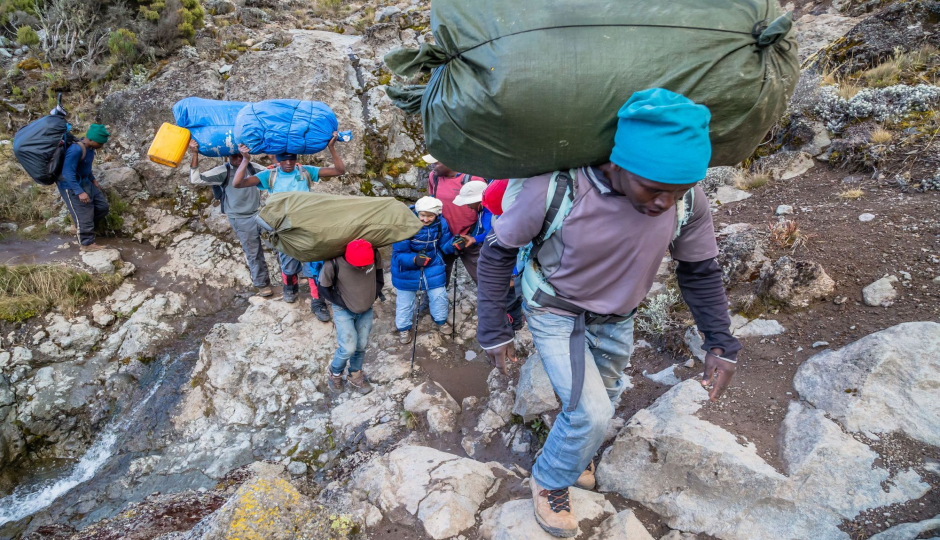
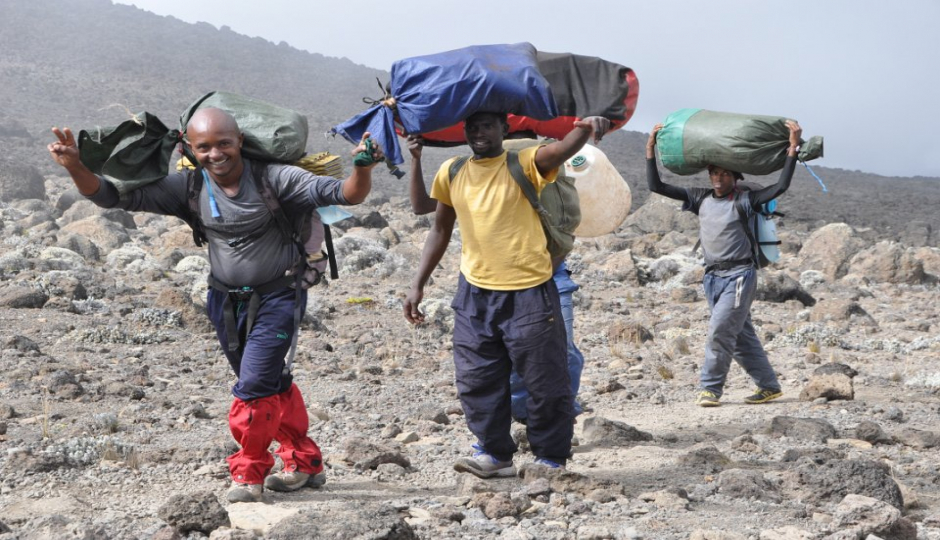
What is a Reasonable Tanzania Safari Itinerary?
How Do I Plan a Kilimanjaro Climb?
To book your adventure, simply send us an email detailing your desired experience—whether it's climbing Mount Kilimanjaro, going on a Tanzania safari, or enjoying the Zanzibar beach.
We'll promptly respond with all the information you need to finalize your plans. Plus, we offer the convenience of online payment to make the process even smoother.
View Packages